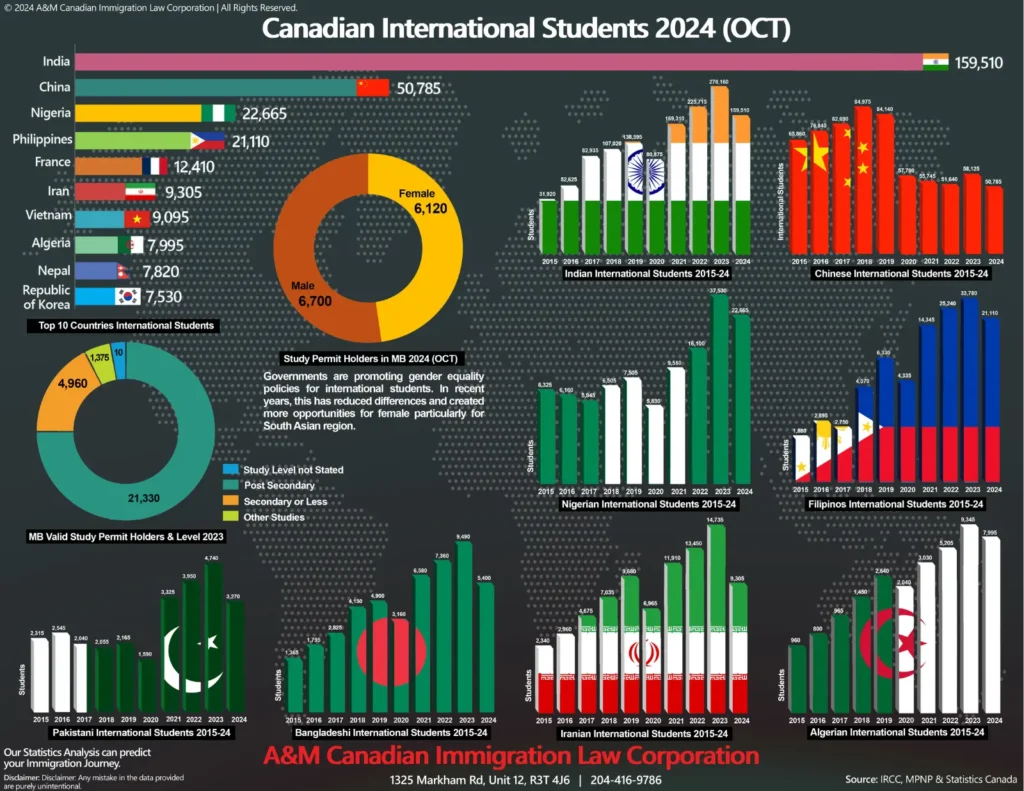
A Comprehensive Analysis of Canadian International Students in 2024
The infographic by A&M Canadian Immigration Law Corporation provides valuable insights into the dynamics of international student demographics in Canada as of October 2024. Based on data from the IRCC, MPNP, and Statistics Canada, the report explores trends by country, gender, and study levels, offering a holistic view of Canada’s international education landscape. Below is an in-depth analysis:
Top Contributing Countries:
India: India remains the dominant source of international students, contributing 159,510 students. With more than 50 thousand students, the Chinese students takes the second place.
Nigeria and the Philippines: Ranking third and fourth, these countries sent 22,665 and 21,110 students, respectively, showing Canada’s growing popularity in Africa and Southeast Asia.
Gender Dynamics:
The gender distribution among study permit holders in Manitoba reflects near parity, with 6,700 males and 6,120 females. This underscores Canada’s commitment to promoting gender inclusivity and diversity in its educational policies.
Special mention is made of South Asian female students, with reduced differences and growing more opportunities for females have increased the number of female students.
Study Levels and Permit Holders in Manitoba
Post-Secondary Studies dominate with 21,330 permits, indicating that most international students are pursuing higher education in Canada.
Secondary or less accounts for 4,960 permits, while 1,375 permits are at unstated study levels.
These figures suggest that Canada’s reputation for quality post-secondary education continues to be the main driver for international student inflows.
The predominance of post-secondary education highlights Canada’s strong position as a leader in tertiary education. Its universities and colleges continue to attract students with diverse programs and opportunities for work permits and permanent residency pathways.
The data confirms Canada’s position as a global education hub, attracting students from diverse regions, including South Asia, East Asia, Africa, and the Middle East.
Disclaimer:
This trend is based on the last few years’ data we collected analyzed. We apologize if there is any mistake. Please feel free to contact us to explore future opportunities based on this statistical analysis.






